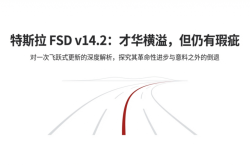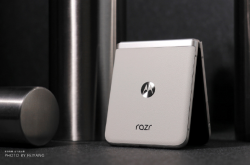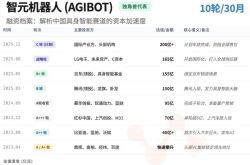Is the Era of Billion-Dollar 3D LiDAR for Robots Upon Us?
![]() 08/14 2025
08/14 2025
![]() 584
584
Public data projects that by 2029, the global number of robots utilizing LiDAR will surge to 5 million, with the LiDAR market in robotics eventually topping $10 billion.
Within the robotics realm, the proliferation of intelligent lawn mowing robots and the accelerating mass production of humanoid robots are emerging as key drivers for the 3D LiDAR market.
3D LiDAR addresses the fundamental needs of robot mobility: positioning, navigation, and obstacle avoidance.
Currently, Hesai leads the world in cumulative LiDAR sales for robots, as per public financial reports of LiDAR listed companies. With a deep-rooted presence in robotics for several years, Hesai boasts over 2,000 high-quality customers.
On May 30, 2025, Hesai's JT series surpassed 100,000 cumulative deliveries, less than five months after its January launch.
On August 6, Hesai announced a strategic collaboration with Vbot, China's pioneering consumer-grade embodied intelligence company. The following day, Hesai partnered with StarMotive, an embodied intelligence startup closely associated with Tsinghua University.
Mobile robots, a significant category of LiDAR-equipped robots, benefit from Hesai Tech's JT and XT series LiDARs. These devices, with their high-precision 360° environmental perception, provide robust support for positioning, navigation, and obstacle avoidance in mobile robots from companies like SIASUN, Joyrobo, and HAOMO AI.
At CES 2025, Hesai and MOVA showcased the new MOVA600/1000 lawn mowing robots, equipped with JT16 LiDAR for high-precision 3D environmental perception. Within six months, shipments of these Hesai-equipped robots exceeded 100,000 units, topping Amazon charts in Germany and France.
Hesai's robust footprint in the robotics market spans over 40 countries, covering diverse applications like lawn mowing robots, delivery robots, cleaning robots, and mobile robots. Here are its key product series:
JT Series: In January 2025, Hesai unveiled its latest CES innovation – the mini ultra-hemispherical 3D LiDAR JT series. Combining the world's widest field of view, high resolution, low power consumption, and compact design, this LiDAR empowers applications in service robots, mobile robots, delivery robots, cleaning robots, and lawn mowing robots.
OT128: Launched in September 2024, Hesai's new flagship 360° long-range LiDAR OT128 is essential for L4 autonomous driving. It also excels in smart factories, ADAS ground truth system development, port logistics automation, and industrial robots.
XT Series: Since its 2022 release, Hesai's XT LiDAR series has been popular in surveying, mapping, and industrial applications. Designed for the generalized robotics market, it offers high precision, zero blind spots, and cost-effectiveness, making it ideal for industrial applications, unmanned logistics, and building digital twins.
JT Series: Mini Ultra-Hemispherical 3D LiDAR
- Ultra-Hemispherical Omnidirectional Perception: 360° x 189° ultra-wide field of view coverage
- Mini Form Factor: Compact and lightweight, about the size of a billiard ball, enabling flexible installation
- Powerful Core: Utilizes Hesai's proprietary chip platform, achieving up to 256 lines
- Zero Blind Spots: Minimum detection distance of 0 m, ensuring no blind spots for close-range perception
- Exceptional Value: Technological innovation optimizes costs, making high-precision 3D LiDAR affordable for widespread use in industrial robots
FTX: Global Widest Field of View Solid-State LiDAR
- Ultra-Wide Field of View: 180° x 140° solid-state automotive LiDAR with the widest field of view globally
- Mini Form Factor: Window area of only W 29 x H 47 mm
- Ultra-High Resolution: 0.47°(H) x 0.47°(V)
- Ultra-Low Power Consumption: <6W
- Safe and Reliable: Solid-state, automotive grade
FTX, Hesai's newest automotive-grade solid-state LiDAR, boasts the widest field of view globally. It has a ranging capability of up to 30 m at 10% reflectivity, exceptional resolution, and a point frequency 2.5 times higher than its predecessor, reaching 492,000 points per second. This enables prompt detection of strollers, electric bikes, pedestrians, and more.
Beyond its outstanding resolution, FTX significantly reduces size while enhancing performance. Compared to the previous generation, its weight is down by 66%. Through embedded installation, the exposed window area of FTX shrinks by 40% to just 47 x 29 mm, enhancing aesthetic appeal.
In comparison to 2D LiDAR, 3D LiDAR offers distinct advantages in omnidirectional perception. While 2D LiDAR provides basic environmental perception, its scanning is limited to a single plane, making it challenging to detect out-of-plane obstacles (like ground holes or high-altitude objects). 3D LiDAR, however, constructs a three-dimensional point cloud through multi-line scanning, effectively overcoming this limitation.
Overall, as technology matures and robots see widespread adoption, the cost of 3D LiDAR is poised to decline significantly. When the cost-effectiveness of 3D LiDAR matches that of 2D LiDAR, it will mark the acceleration of its penetration into the robotics market.






